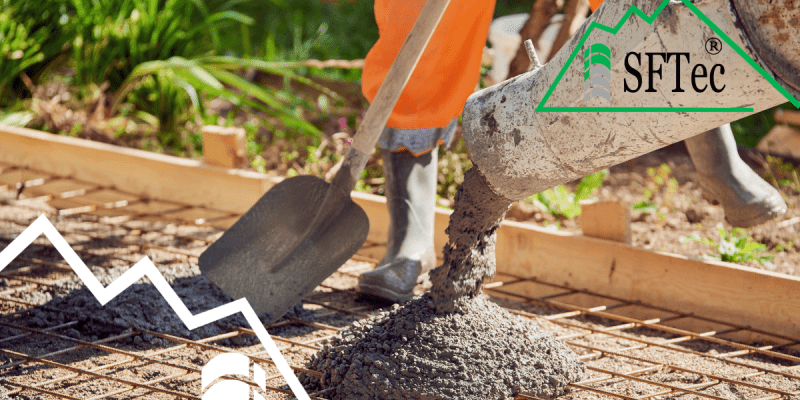It’s not always easy to find the answers we are looking for, especially when it comes to technical information related to construction material. This is where SFTec’s specialists can help.
Our vast industry knowledge allows us to provide you with all the information you need to understand the benefits of FRP rebar and to evaluate if it is a good solution for your next concrete-based structure project (it likely is!). Here are some of our most common questions, answered.
What is FRP rebar?
Although this material has existed for a very long time (since WWII to be exact), it is not always easily recognized. At SFTec, we aim to make sure you fully understand the technology behind our products which is why it is very important that you are familiar with the essence of FRP rebar to understand its benefits. The term FRP bar refers to Fiberglass Reinforced Polymer rebar, also known as fiber-reinforced plastic. FRP Rebar is an alternative to steel reinforcement in concrete structures. Such rebars are made of continuous aramid fiber (AFRP), carbon fiber (CFRP), glass fiber (GFRP) or basalt fiber (BFRP) embedded in a resin matrix. In fact, GFRP is the most commonly used rebar due to its efficiency and cost effectiveness. We always associate FRP rebar to concrete as it is considered to be the best choice for several applications, including bridges, roads, garages, and many more. See all the applications here.
Is FRP better than steel?
Another question we often get is relative to the comparison of FRP and steel. It is not a simple answer, as it depends on the criteria you are looking for in the material you need for your structure. The word “better” here is relative. The fact is, there are several advantages that are exclusive to the use of FRP and many other factors that can facilitate the decision of which material to employ. For example, FRP’s resistance to corrosion. Steel reinforcement of concrete is easily corroded, and corrosion results in structural failure. Therefore, when evaluating the durability of concrete structure, FRP bars are the better alternative. In fact, recently, the use of FRP bars as internal reinforcement for concrete structures in aggressive environments has arisen as an inventive solution to eliminate steel corrosion problems. Another important advantage FRP rebar has over steel is the fact that it is closer to the modulus of concrete. To find out more about the benefits of FRP rebar, click here.
How long does it take to have the FRP product delivered to our job site?
Let’s assume you’re ready to use FRP rebar, but you’re worried about lead time. No problem. SFTec Inc. understands the importance of sticking to a schedule and works to deliver your products in a timely manner. In fact, some of our products are ready to ship as-is. This is the case of our most usable diameters of GFRP straight rebars. If you’re looking to customize your bars, you can order from our bent rebars. These take 2-3 weeks to produce based on the required quantity. Once they are ready, we ship them directly to your site. Always plan for 3-4 weeks for shipping time.
Got more questions? Check out our FAQ section on our website or better yet, get in touch with one of our experts. We will be happy to assist you with your inquiries.

